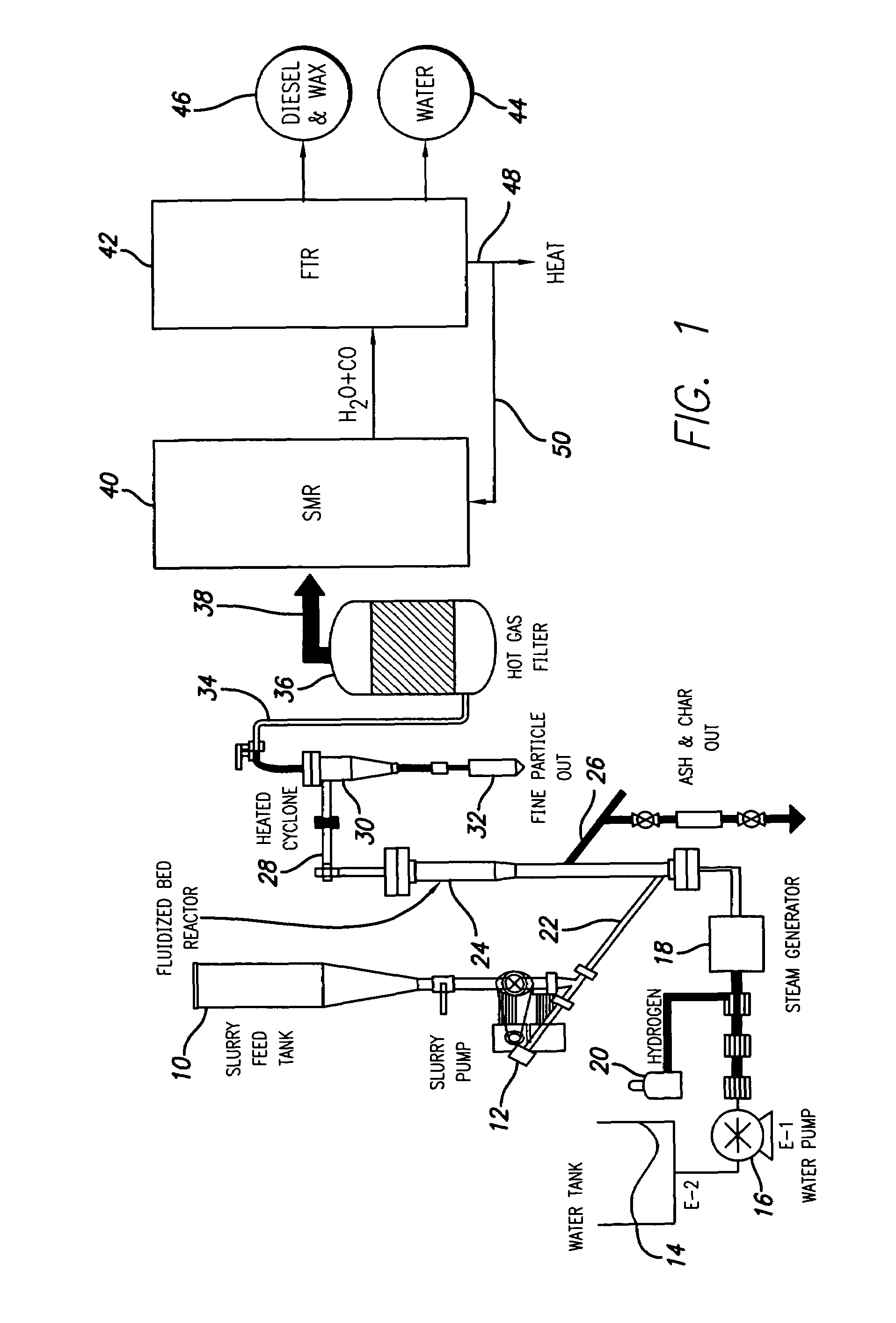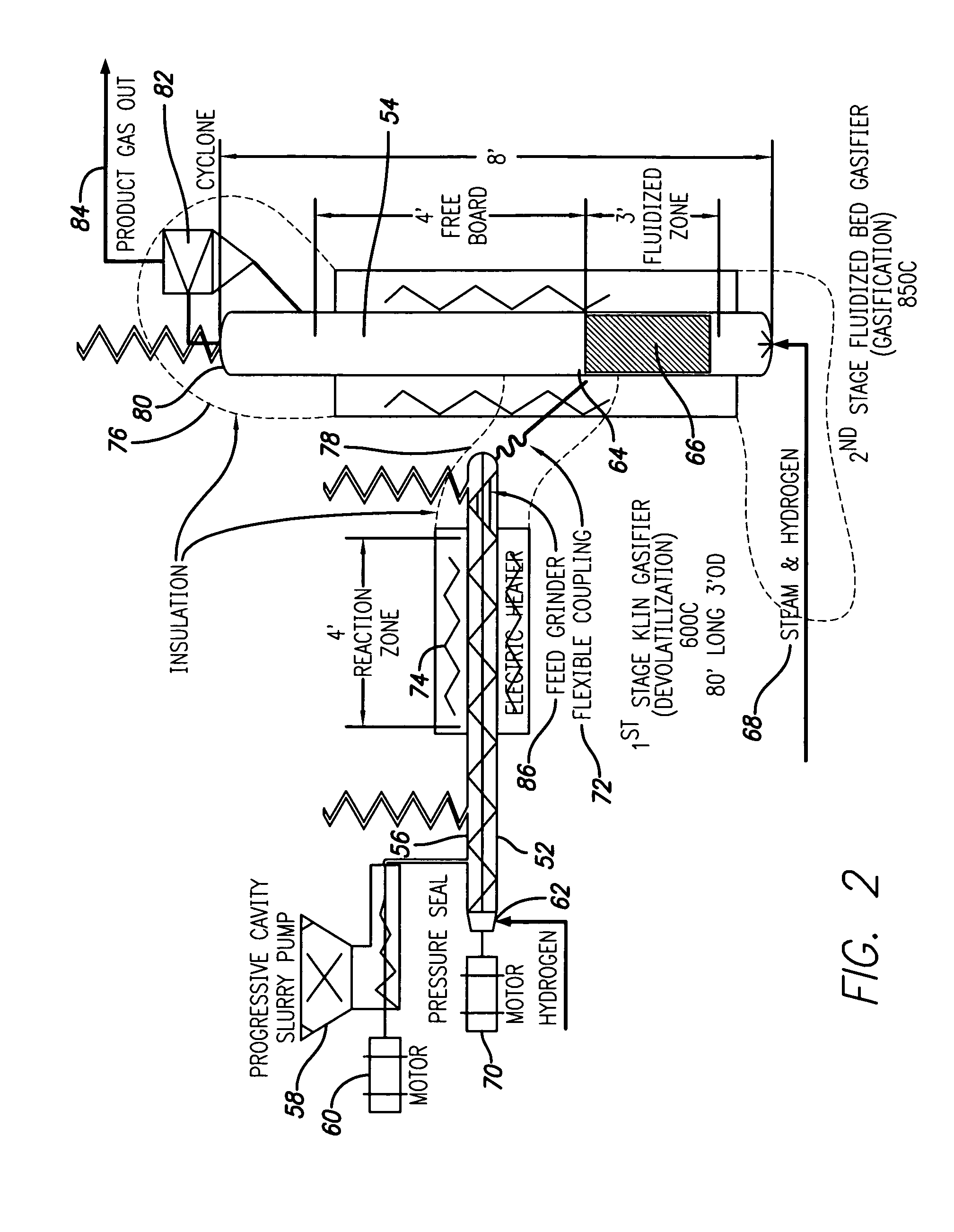Method and apparatus for steam hydro-gasification in a fluidized bed reactor
a fluidized bed reactor and hydrogasification technology, which is applied in the direction of combustible gas production, combustible gas purification/modification, furnaces, etc., can solve the problems of reducing the catalyst efficiency, serious environmental pollution, and a major dependence on petroleum, so as to promote heat and mass transfer, improve the effect of economics and good mixing
- Summary
- Abstract
- Description
- Claims
- Application Information
AI Technical Summary
Benefits of technology
Problems solved by technology
Method used
Image
Examples
Embodiment Construction
[0027]Referring to FIG. 1, Apparatus is shown in accordance with a first embodiment of the invention for a process for converting carbonaceous material such as municipal waste, biomass, wood, coal, or a natural or synthetic polymer to a methane and carbon monoxide rich gas. The carbonaceous material in the form of a slurry is loaded into a slurry feed tank 10 and gravity fed to a slurry pump 12. In this embodiment, water from a water tank 14 is fed by a water pump 16 to a steam generator 18. Simultaneously, hydrogen is fed to the steam generator 18, which can be from a tank 20 of hydrogen, from an internal source such as the output from a downstream steam methane reformer (as will be described below), or from both. The output of the slurry pump 12 is fed through line 22 to the bottom of a fluidized bed reactor 24 while the output from the steam generator 18 is fed through line 25 to the fluidized bed reactor 24 at a point below the slurry of carbonaceous material.
[0028]In another em...
PUM
| Property | Measurement | Unit |
|---|---|---|
| solid residence time | aaaaa | aaaaa |
| gas residence time | aaaaa | aaaaa |
| pressure | aaaaa | aaaaa |
Abstract
Description
Claims
Application Information
 Login to View More
Login to View More - R&D
- Intellectual Property
- Life Sciences
- Materials
- Tech Scout
- Unparalleled Data Quality
- Higher Quality Content
- 60% Fewer Hallucinations
Browse by: Latest US Patents, China's latest patents, Technical Efficacy Thesaurus, Application Domain, Technology Topic, Popular Technical Reports.
© 2025 PatSnap. All rights reserved.Legal|Privacy policy|Modern Slavery Act Transparency Statement|Sitemap|About US| Contact US: help@patsnap.com


